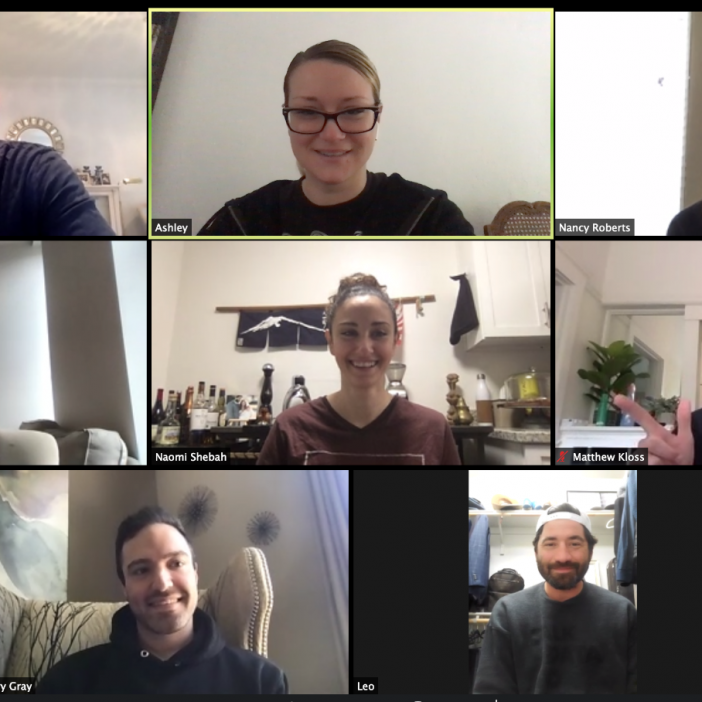The spread of coronavirus has not just affected app downloads and engagement but also the business activities of the mobile industry as a whole. In an industry known for building camaraderie through conferences, COVID-19 has signified a profound shift as companies forgo hosting and attending events. We explore how the pandemic will affect the mobile industry and the overall happiness of app marketers.
Let’s Get This (Virtual) Party Started
It’s no question the coronavirus outbreak has wreaked havoc on business travel and the annual industry events schedule in mobile. As a result, major industry gatherings, including MWC, GDC, E3, SXSW, and MAU have been canceled to control the spread of the outbreak.
To confront these developments, many companies are turning towards virtual formats to maintain their presence. Meredith Heller, Co-Founder of Prospect Events, a full-service event design and production firm that has produced events for mobile companies such as mParticle and Attentive Mobile said, “We are seeing a trend in tech companies and organizations who had events and conferences set up for April and May, moving them to the fall or making them "virtual". Many companies that rely on events the first half of the year have to get creative with their lead gen. For examples, companies are hosting webinars and virtual conferences to generate leads and connect with existing clients."
One such company is HTC, which held its fifth annual XR industry conference, VIVE, in virtual reality (VR). Two thousand people from over 55 countries registered for the event. Speakers were able to create custom avatars to represent their disembodied voices. Content at the four-hour show included presentations and panels from experts in the XR and telecom industries.
Other companies are finding creative ways to capture leads without trade show interactions. Computer software provider, Cockroach Labs, created a “virtual badge scan” that uses a landing page to capture contact info and then makes a small donation to Women Who Code for every email address it gets. Larger $50 donations incentivize one-on-one meetings with company reps.
Relationship Building From Afar
Companies used to wining and dining their clientele are also finding alternative ways to recreate steak dinner-type interactions virtually. This includes videoconferencing in the place of in-person one-on-one meetings and snail-mail. Heller noted, “We are also seeing companies drop shipping swag packages to clients and prospects directly since they are not able to meet in person.”
Moreover, social media can be used to build leads and connect with contacts while in-person meetings are on pause. In fact, there have been huge increases in people checking social media across all age demographics; 27% among Gen Z, 30% among Millennials, 29% among Gen X and 15% among Boomers. Unsurprisingly, social media spending is also expected to rise by 22.2% as a result of the coronavirus pandemic.
Working From Home and Mental Health
But how will extended shelter at home policies affect the longer-term happiness of employees in the tech industry?
Studies show that working from home can improve productivity. But, the benefits can decline over extended periods if employees are not given the option of coming into an office. The Stanford researchers behind the same study that found a 13% increase in productivity when working from home, have noted the issues with applying their study to the effects of the pandemic on the global workforce.
First, the employees evaluated in the study volunteered to work from home after being given a choice. In addition, remote workers had the option to go into the office at least one day a week. Researchers noted that the lack of a choice and prolonged periods of working from home in the pandemic can have an inverse effect on creativity. This is based on the fact that ambition and motivation come from face-to-face environments and connectivity in the workplace.
In This Together
To confront these challenges, researchers noted the importance of conducting regular video meetings to foster community and social contact. This includes scheduling group and one-on-one video chats that prioritize personal life updates of team members. Other ways to foster connectivity include scheduling video happy hours and breaks to inspire creativity and foster emotional support.
Mobile app conference series, App Growth Summit, has started hosting a weekly virtual happy hour to unite colleagues and friends in the mobile app space. Managing Director Louis Tanguay said, “People still have their internal company meetings and happy hours with their team but what’s missing are the meetings you have with industry friends at events. The happy hours provide a neutral space for industry colleagues to connect on a human level, not to sell. We are all dealing with the stress of this situation. We want to keep our community united by providing a forum for people to talk about how they are coping.”
Takeaways
The coronavirus pandemic has had a profound impact on ad spending and the mobile industry as a whole. In the face of canceled events, tech companies are looking for virtual forums and opportunities to connect with clientele and colleagues. With nearly 88% of organizations requiring employees to work from home, COVID-19 has also created new mental health challenges for the remote workforce. Innovating ways to foster connectivity and inspiration through videoconferencing will be a necessity in the age of social distancing.

